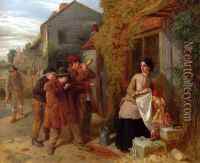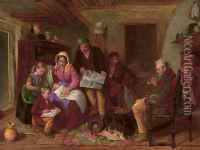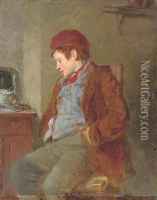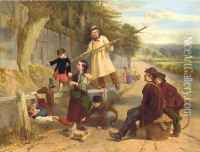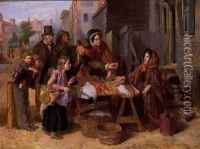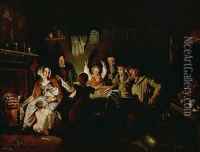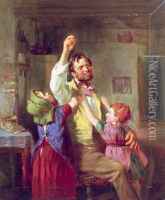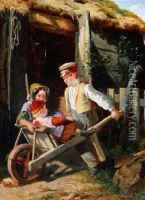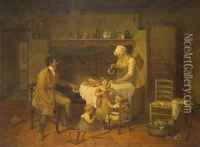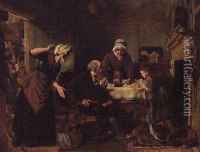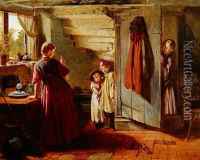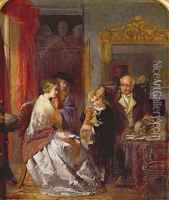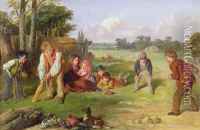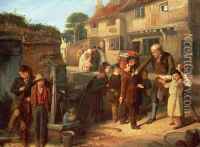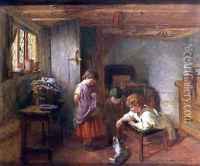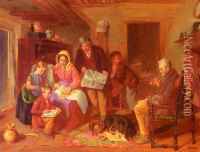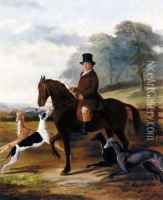William Henry Knight Paintings
William Henry Knight was an English genre painter born in Newbury, Berkshire, England, in 1823. He is best known for his whimsical and charming depictions of Victorian-era life, often focusing on children and their antics. His works are characterized by their narrative quality and attention to detail, which capture the spirit and social customs of the time.
Knight began his artistic training at an early age, showing a talent for drawing and painting. He moved to London to further his education and was admitted to the Royal Academy Schools in 1845, where he studied under established artists of the day. Knight exhibited his first painting at the Royal Academy in 1846, and continued to exhibit there and at other prominent venues throughout his career.
His paintings often reflected the daily life of people, especially the lower and middle classes, and he had a particular knack for portraying the innocence and playfulness of children. One of his most famous works is 'The Young Customers' (1852), which depicts two young boys at a shoemaker's shop. Works like this were popular in Victorian England, as they resonated with the public's fascination with childhood and domestic life.
Despite his talent, Knight struggled with financial stability throughout his life. He never achieved the same level of fame or financial success as some of his contemporaries. Nevertheless, his work was appreciated by a certain section of the art buyers and critics of his time. Knight's paintings can be found in several art galleries and private collections.
William Henry Knight's life was relatively short; he died in 1863 at the age of 40. His death cut short a promising career, but his art remains a testament to the genre painting of the Victorian era, providing insight into the period's culture and society.
